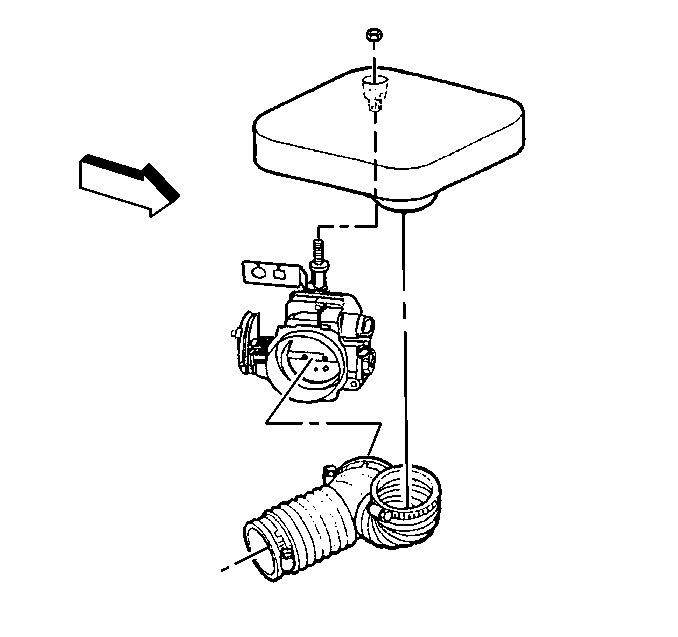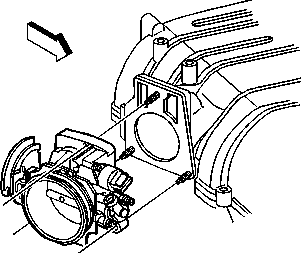Notice: Do not use a higher strength locking compound than recommended when precoating the screws. Doing so could make removing the screw extremely difficult or result in damaging the screw head.
The service repair kits are supplied with a small vial of thread-locking compound with directions for use. If the material is not available, use Loctite 262 or the equivalent.
Notice: Do not subject a throttle body assembly which contains the following components
to an immersion cleaner or a strong solvent:
• Throttle position (TP) sensor • Idle air control (IAC) valve • Sealed throttle shaft bearings
Cleaning Procedure
The throttle body assembly repair procedures cover component replacement with the unit on the vehicle. However, the throttle body replacement requires that the complete unit be removed from the engine.
An 8 digit part identification number is stamped on the bottom of the throttle body casting. Refer to this number if servicing, or part replacement is required.
While on-vehicle or off, clean the throttle bore and valve deposits using the carburetor cleaner and a parts cleaning brush. Follow the instructions on container.
The throttle body metal parts may be cleaned following disassembly in a cold immersion-type cleaner such as GM X-55 or equivalent.
Removal Procedure
- Disconnect the negative battery cable.
- Remove the air inlet duct fastener and duct.
- Disconnect the IAC valve and TP sensor electrical connectors.
- Disconnect the throttle and cruise control cables.
- Remove the accelerator cable bracket bolts and bracket.
- Remove the wiring harness fastener nut and throttle body retaining studs.
- Remove the throttle body assembly.
- Remove the flange gasket and discard.
- Clean the gasket surface of the intake manifold.
Caution: Unless directed otherwise, the ignition and start switch must be in the OFF or LOCK position, and all electrical loads must be OFF before servicing any electrical component. Disconnect the negative battery cable to prevent an electrical spark should a tool or equipment come in contact with an exposed electrical terminal. Failure to follow these precautions may result in personal injury and/or damage to the vehicle or its components.




Installation Procedure
- Install the new flange gasket.
- Install the throttle body assembly.
- Install the throttle body retaining studs and wiring harness fastener and nuts.
- Connect the throttle and cruise control cables.
- Install the accelerator cable bracket and bolts.
- Connect the IAC valve and TP sensor electrical connectors.
- Install the air inlet duct and retaining nut.
- Connect the negative battery cable.
- With the engine OFF, check to see that the accelerator pedal is free. Depress the pedal to the floor and release.



Notice: Use the correct fastener in the correct location. Replacement fasteners must be the correct part number for that application. Fasteners requiring replacement or fasteners requiring the use of thread locking compound or sealant are identified in the service procedure. Do not use paints, lubricants, or corrosion inhibitors on fasteners or fastener joint surfaces unless specified. These coatings affect fastener torque and joint clamping force and may damage the fastener. Use the correct tightening sequence and specifications when installing fasteners in order to avoid damage to parts and systems.
Tighten
Tighten to 25 N·m (18 lb ft).

Tighten
Tighten the nut to 2 N·m (18 lb in).
